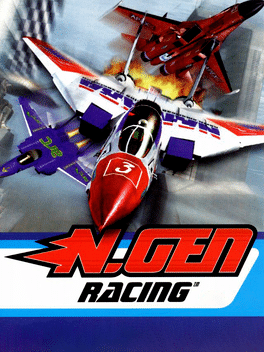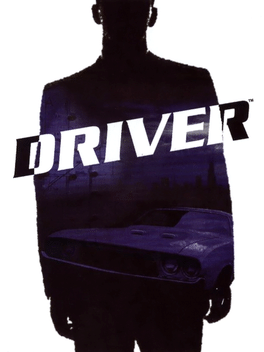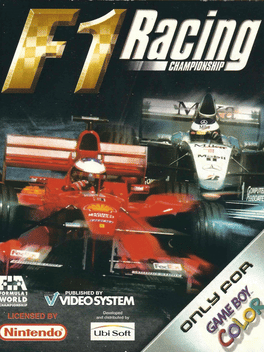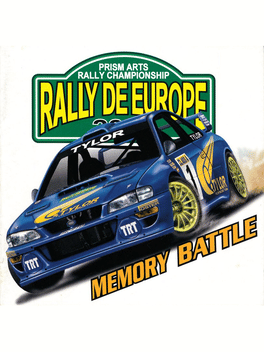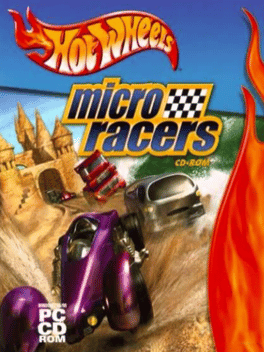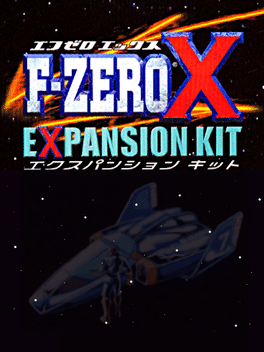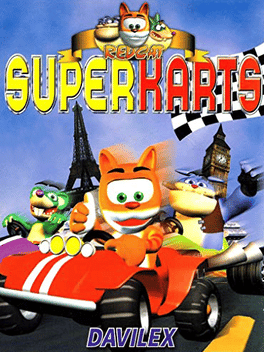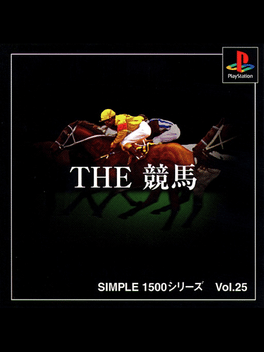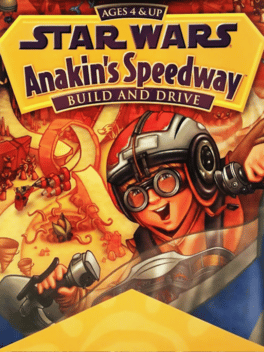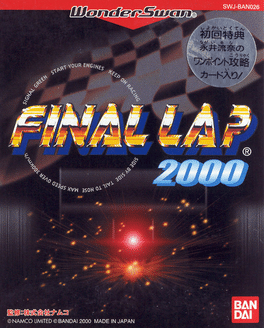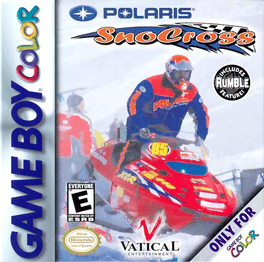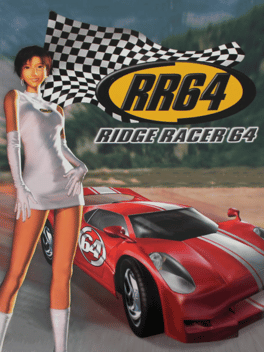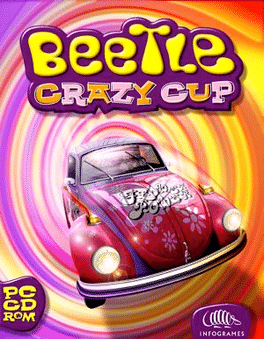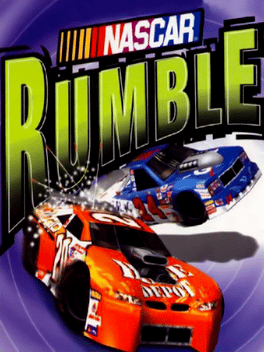New Racing Games - Page 114
-
NGen Racing
2000
NGen Racing
2000
Instead of a car, like in most racing games, you control a Fighter Jet Plane. The game features two game modes: arcade and N.GEN. In the arcade mode you play a serious of championships. Winning a championship grants you access to a higher one. In N.GEN mode you start with a poor plane and have to earn money to upgrade it so you can participate in more challenging and more rewarding races. You can choose between arcade or professional controls. The planes can shoot various weapons, such as missiles, rockets and guns at the opponents. There are 38 jets to fly in on 14 different tracks. In Two player mode you can play Powerball. Here each player has to try and pick up the ball and score points by flying through drones. -
Driver
2000
-
Option Tuning Car Battle Spec-R
2000
Option Tuning Car Battle Spec-R is the third in a series of PlayStation racing games sponsored by the Japanese magazine Option. -
Rally de Europe
2000
Rally de Europe
2000
Rally de Europe is Prism Arts's follow up to Rally de Africa, released exclusively in Japan on the PlayStation in 2000. -
Hot Wheels Micro Racers
2000
Hot Wheels Micro Racers features mini Hot Wheels vehicles as the game's playable and computer-controlled racers, with gameplay consisting of arcade-style racing. -
F-Zero X Expansion Kit
2000
An expansion disk released for the 64DD peripheral that adds multiple additional features when connected to the base game: - 12 new and more difficult courses in 2 new cups, DD-1 and DD-2, as well as an edited cup option. - A course editor, with 100 save slots, similar to the developer tool used to make the game's courses. - A vehicle editor, with 100 save slots, allowed front, rear and wing parts to be combined with different parameters to balance performance - Expanded time attack ghost feature, 3 available for each course - New music tracks and changed audio from mono to stereo - Some of the characters had new higher performance machines available Player created data could be shared/imported but without mouse or online support it was difficult to use. Character portraits might have been editable by swapping data with the Mario Artist 64DD games. -
RedCat Superkarts
2000
RedCat Superkarts
2000
While RedCat and WhizzKitty are in the tree house playing with their racetrack, they receive a message. It comes from the six national champions of the European Kart Competition. They challenge everyone to a competition. Whoever wins all races gets the Golden Euroster, which no one has ever managed to do before. Of course they want to participate. However: Brutus and Max discover this and decide to join in, so that they can buy a lot of cheese and bones with the star. The four of them travel to Europe to take part in the race and compete for the star. -
Micro Maniacs Racing
2000
Micro Maniacs Racing
2000
Micro Maniacs Racing is an unofficial sequel to the Micro Machines racing games and features a similar 3D perspective to the previous game, Micro Machines V3. As with previous games, the racing environments are based in real-world locations such as kitchens, laboratories and gardens, played "zoomed in" due to the miniature nature of the racers The 12 character choices (some of which are unlockable) are differentiated by various unique attack moves. Instead of racing with vehicles, the Micro Maniacs race on foot. -
Test Drive: Le Mans
2000
Test Drive: Le Mans
2000
Test Drive: Le Mans is a racing game for the Game Boy Color. The game features three racing modes: Arcade, Le Mans, and Championship. Le Mans allows you to race on the actual circuit, while Championship lets you race on 10 real tracks from all around the world. -
Simple 1500 Series Vol. 25: The Keiba
2000
Simple 1500 Series Vol. 25 - The Keiba is a horse racing game in which the player can compete in differents tracks. The gameplay is really arcade since to gain speed the player has to press the X Button lots of time, but it also has to be careful not to tire so much his horse or the horse stamina will be over, and reduce to speed at the end of the race, so is better to be in the group and accelerate in the last part of the race to have some chances of win. The game features also a 2 players mode in which 2 human players can compete in the same race to know which of them will arrive in a better place. -
Star Wars: Anakin's Speedway
2000
Star Wars: Anakin's Speedway challenges kids to construct and master podracing test tracks with their favorite Episode I characters such as Anakin, Sebulba, and Gasgano. Players could create thousands of tracks filled with turns, loops, jumps, and tunnels while learning the dynamics of speed and momentum. -
Final Lap 2000
2000
Final Lap 2000
2000
Final Lap 2000 is the first hand-held incarnation of Namco's Final Lap racing games. That "Final Lap", which is a perfect fusion of the fun of a racing game and the online competition, will appear in WonderSwan with various new elements. With the communication battle function that can be performed in real time, the beautiful race screen, the power change depending on the position, etc., it is a work that makes you think that "Final Lap" is well reproduced on a handheld game machine. Also, in addition to the original new modes of WonderSwan version such as world tour mode and time trial mode, it is also equipped with a course edit function that allows you to freely create courses, and you can also send your own course to your friend's WonderSwan and play. -
Walt Disney World Quest: Magical Racing Tour
2000
star 7.7Walt Disney World Quest Magical Racing Tour boasts more playable characters than any kart racer before it (a total of 13 are offered), and each of the game's tracks allows you to maneuver a different vehicle. Instead of being confined to just a go-kart, you'll get a bobsled, or a rocket ship, and several others. Collect a myriad of power-ups to your vehicle such as Mickey coins which allow you to race a little faster with each additional coin you collect. Or use the guided bottle rocket to get a speed boost and home in on your opponent. You can also collect items that can be used against your opponents like the frog spell, which will leave them hopping in your dust. Or launch an acorn at them and send them flying out of control. -
SnowCross
2000
SnowCross
2000
Get on a snowmobile and drive your way to victory with SnowCross. Try to master 10 different courses that take you through ovals, twisting bobsled runs, and several treks through the wilderness. When you are ready for some competition, try to win the Tournament Cups, where you will have to take first place from two other racers. After winning, you will be able to upgrade your vehicle before moving on to the next race. With three different Cups to win, there is plenty of racing action. If you get tired of racing computer-controlled opponents, hook up a link cable to challenge your friends to a race. You will become the greatest snowmobiler of all time in SnowCross -
Rollcage Stage II
2000
Rollcage Stage II
2000
star 8.5Rollcage Stage II is an arcade-style racing game for PlayStation and PC, developed by Attention To Detail, and published by Psygnosis. It is the sequel to Rollcage and was released in 2000. On top of the basic racing concept, the cars can be equipped with weapons, that are picked up on the track as bonuses, which can be used against competing cars. The automobiles themselves, once again, have wheels that are larger than the body of the car thus creating a car that has no 'right way up' and can be flipped and continue to drive. -
Ridge Racer 64
2000
Ridge Racer 64
2000
star 7.9Ridge Racer 64 gives Nintendo 64 owners a chance to jump into the world of Ridge Racer. Besides exclusive tracks, this edition contains races from the PlayStation Ridge Racer series, with improved graphics and a new set of cars. -
Beetle Crazy Cup
2000
Beetle Crazy Cup
2000
Choose your favorite from more than 50 incredibly detailed vehicles and race to become champion in each of 5 maddening events. Experience the thrill of breakneck SPEED as you race against the competition in your powerful, souped-up VW. Defy the laws of gravity by activating your nitro-boosters for a spectacular, high-flying JUMP. Drive enormous wheels and massive engines on a course littered with cars for your MONSTER vehicle to smash, bash and crash. You can almost taste the dirt in your mouth as you skid around the stock car CROSS challenge. Enjoy the sun and sand while racing your BUGGY on the beach, but watch out for that surf and don't get burned! -
NASCAR Rumble
2000
NASCAR Rumble
2000
star 8NASCAR Rumble is a racing game by Electronic Arts for the PlayStation. Players race through 18 different courses set in six different areas collecting powerups to aid them. The game was met with fairly positive reviews, and earned an 80% on GameRankings. This game is a great departure to many NASCAR games, as this game is an arcade racer featuring various tracks and Mario Kart esque powerups.
